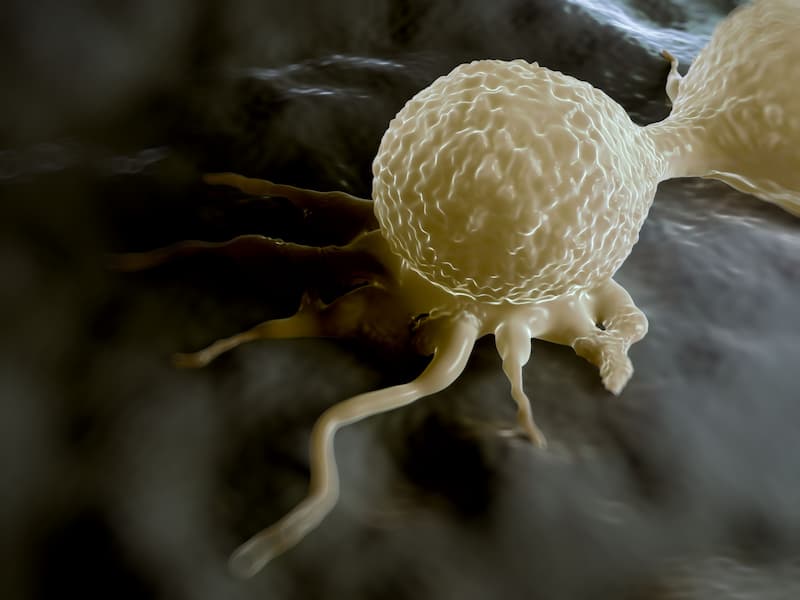Your AI-Trained Oncology Knowledge Connection!
FDA Grants Priority Review to Inavolisib in HR+/HER2– PIK3CA+ Breast Cancer
The FDA has set a Prescription Drug User Fee Act date of November 27, 2024, for the inavolisib-based combination in this breast cancer population.
The FDA granted priority review to this treatment based on findings from the phase 3 INAVO120 trial (NCT04191499) assessing the efficacy and safety of inavolisib plus palbociclib/fulvestrant compared with palbociclib/fulvestrant only.The FDA granted priority review to this treatment based on findings from the phase 3 INAVO120 trial (NCT04191499) assessing the efficacy and safety of inavolisib plus palbociclib/fulvestrant compared with palbociclib/fulvestrant only.

The FDA has granted priority review to a new drug application (NDA) seeking approval for inavolisib plus palbociclib (Ibrance) and fulvestrant as a treatment for adults with hormone receptor (HR)–positive, HER2-negative, PIK3CA-mutant locally advanced or metastatic breast cancer or disease recurrence within 1 year of receiving prior adjuvant endocrine therapy, according to a press release from the developers, Roche.1
The regulatory agency has assigned a Prescription Drug User Fee Act date of November 27, 2024, for its decision on approving the inavolisib combination as a treatment for the aforementioned population.
The FDA granted priority review to this treatment based on findings from the phase 3 INAVO120 trial (NCT04191499) assessing the efficacy and safety of inavolisib plus palbociclib/fulvestrant compared with palbociclib/fulvestrant only. Investigators presented updated findings from this study at the 2023 San Antonio Breast Cancer Symposium (SABCS).
With a median follow-up of 21.3 months, the investigator-assessed median progression-free survival (PFS) in the inavolisib arm was 15.0 months (95% CI, 11.3-20.5) compared with 7.3 months (95% CI, 5.6-9.3) in the comparator arm (HR, 0.43; 95% CI, 0.32-0.59; P <.0001).2 In each respective arm, the PFS rate was 82.9% vs 55.9% at 6 months, 55.9% vs 32.6% at 12 months, and 46.2% vs 21.1% at 18 months.
At the time of the primary analysis, the overall survival (OS) data were immature. However, they were trending in a positive direction with the inavolisib combination (HR, 0.64; 95% CI, 0.43-0.97; P = .0338). Additional results will be evaluated in the next analysis.
The objective response rate (ORR) was 58.4% with the inavolisib-based combination vs 25.0% with palbociclib/fulvestrant. Additionally, the clinical benefit rate (CBR) was 75.2% vs 47.0% in each respective arm. The median duration of response (DOR) per investigator assessment was 18.4 months (95% CI, 10.4-22.2) vs 9.6 months (95% CI, 7.4-16.6), respectively (HR, 0.57; 95% CI, 0.33-0.99).
Common any-grade adverse effects (AEs) in the experimental and comparator arms, respectively, included neutropenia (88.9% vs 90.7%), hyperglycemia (58.6% vs 8.6%), stomatitis or mucosal inflammation (51.2% vs 26.5%), and diarrhea (48.1% vs 16.0%). Data highlighted that 6.8% and 0.6% of patients in each respective arm discontinued treatment due to AEs.
“The addition of inavolisib to standard of care treatment significantly delayed disease progression in the first-line setting and has the potential to extend survival for people with metastatic breast cancers that harbor PIK3CA mutations,” Levi Garraway, MD, PhD, chief medical officer and head of Global Product Development at Roche, said in the press release.1 “We welcome the FDA’s priority review designation for inavolisib, which underscores the urgency to bring this potential best-in-class treatment option to patients as quickly as possible.”
Investigators of the INAVO120 study assigned 325 patients with PIK3CA-mutant, HR-positive, HER2-negative advanced breast cancer to receive inavolisib plus palbociclib and fulvestrant (n = 161) or palbociclib/fulvestrant only (n = 164). Patients received inavolisib at 9 mg orally once daily, palbociclib at 125 mg orally once daily on days 1 to 21, and fulvestrant at 500 mg on days 1 and 15 of the first circle and then every 4 weeks.
The trial’s primary end point was PFS based on investigator evaluation. Secondary end points included OS, ORR, CBR, DOR, and patient-reported outcomes.
The FDA previously granted breakthrough therapy designation to inavolisib in combination with palbociclib and fulvestrant in May 2024 based on data from the INAVO120 trial.3
“We are pleased that the FDA granted breakthrough therapy designation for inavolisib in recognition of the substantial clinical benefit observed with this regimen. This promising inavolisib-based regimen could transform the PI3K inhibitor class, potentially becoming the standard of care for this patient population in the first-line setting,” Garraway said in a press release at the time of the breakthrough therapy designation.3
References
- FDA grants priority review to Roche’s inavolisib for advanced hormone receptor-positive, HER2-negative breast cancer with a PIK3CA mutation. News release. Roche. May 29, 2024. Accessed May 29, 2024. https://tinyurl.com/4jhf86ry
- Jhaveri KL, Im S, Saura C, et al. Inavolisib or placebo in combination with palbociclib and fulvestrant in patients with PIK3CA-mutated, hormone receptor-positive, HER2-negative locally advanced or metastatic breast cancer: phase III INAVO120 primary analysis. Presented at the 2023 San Antonio Breast Cancer Symposium; December 5-9, 2023; San Antonio, TX. Abstract GS03-13.
- FDA grants breakthrough therapy designation to Roche’s inavolisib for advanced hormone receptor-positive, HER2-negative breast cancer with a PIK3CA mutation. News release. Roche. May 21, 2024. Accessed May 29, 2024. https://tinyurl.com/yc5ybf7m
Newsletter
Stay up to date on recent advances in the multidisciplinary approach to cancer.
2 Commerce Drive
Cranbury, NJ 08512
All rights reserved.